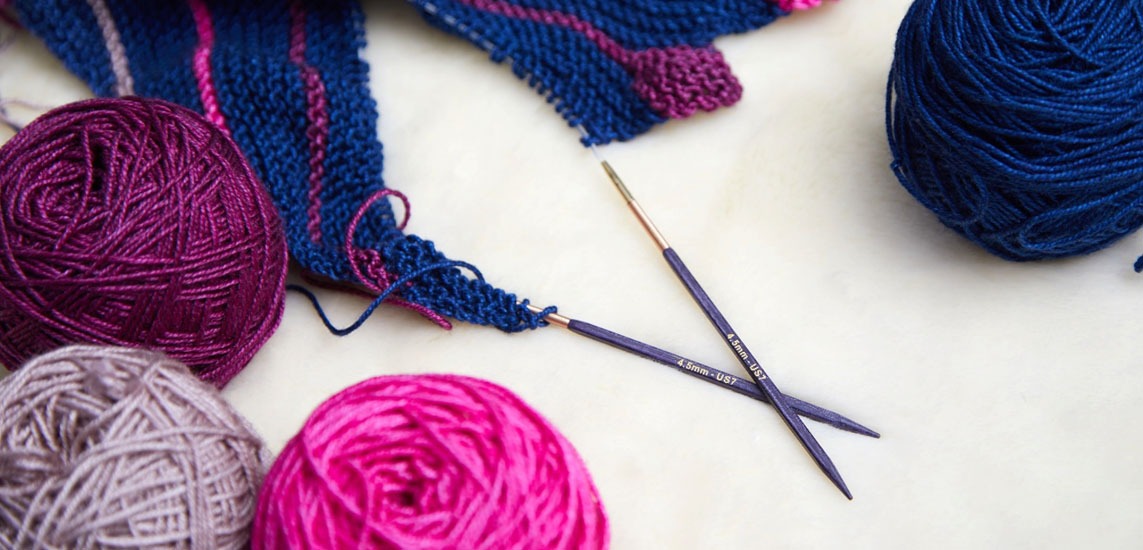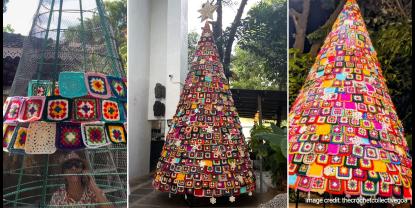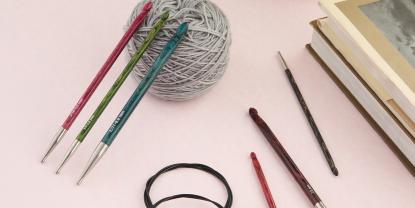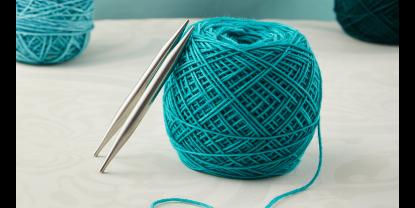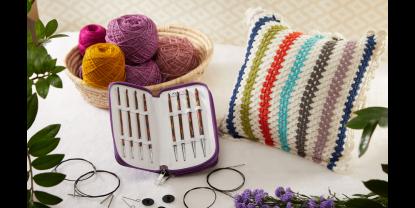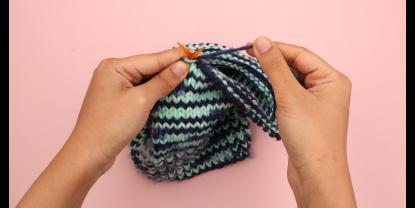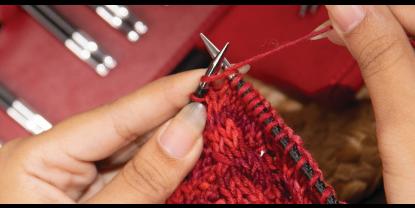Every knitter dreams of crafting seamless masterpieces like funky hats and cozy cowls thus getting the most out of their circular knitting needles. Sneaky ladders are the curse of knitting in the round, as they often disrupt your perfect stitches. Get ready, as we’re about to share the ultimate tips to keep your seamless circumferences on circular or double pointed knitting needles smooth and flawless.
What causes laddering in knitting?
The expression ‘Laddering’ refers to the appearance of loose stitches or gaps between stitches, resembling a ladder or a column of loose stitches after you’ve knitted a few rounds. This issue occurs mainly in circular knitting but can also be a problem when knitting on straight needles.
Uneven tension between your stitches is the primary reason for laddering. This is especially common when switching between double pointed needles or knitting the magic loop on your circulars.
Some yarns are also more prone to laddering, particularly slippery or slick yarns with little elasticity, like cotton, silk, or linen. Lastly, kinks in your knitting cables can also cause uneven stitch tension and laddering.
How to prevent Laddering on Circular Knitting Needles?
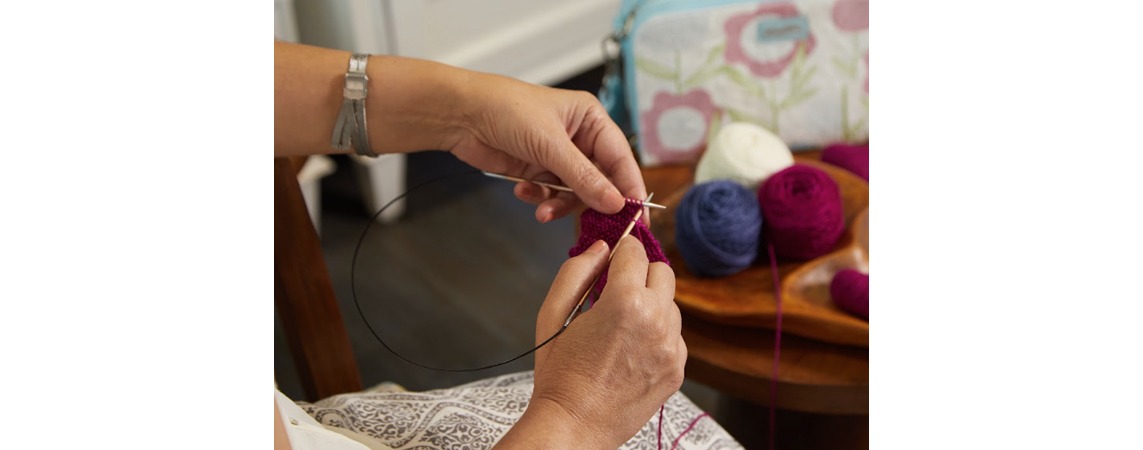
The foundation of smooth knitting is maintaining a uniform tension throughout your work. This means ensuring that each stitch is formed with a similar amount of yarn, avoiding overly tight and loose stitches. Consistent tension is the key to avoiding laddering; it keeps the fabric even and reduces the chance of gaps forming between stitches.
Adjust Tension of Initial Stitches
After completing a round and starting a new one, the initial stitches can be slightly tightened to prevent gaps. This is especially useful when using the Magic Loop method or when your cable is slightly longer than the number of cast-on stitches The key is to knit the first stitch normally and gently tighten the yarn when working the next stitches.
Twist Stitches at Transition Points
For laddering at the points that transition from one section of the circular needle to another (such as in Magic Loop or when using a small circular needle), consider slightly twisting each section's first or last stitch by knitting through the back loop. This way, you tighten the stitch and reduce the gap.
Experiment with different Knitting Needle Materials
Different needle materials (such as bamboo, metal, or wooden knitting needles) can significantly impact your knitting tension and the likelihood of laddering. Some combinations of needles and yarns glide smoothly and help maintain even tension, while others might be more prone to slipping or gripping too much. Experiment with various combinations to find the one that works best for your knitting style.
Use Stainless Steel Swivel Cords
Consider using swivel cords when knitting in the round, especially with circular needles. KnitPro’s memory-free stainless steel cables have a unique feature: they can rotate 360 degrees, moving seamlessly with your knitting. This flexibility helps to reduce the stretch between the yarn and the transitions on the cord. Swivel cords' smooth, rotating action allows for a more fluid knitting experience and helps maintain even tension across stitches. They are a game-changer for knitters who struggle with laddering, as they address one of the vital mechanical issues when knitting on circular needles.
Use Two Circular Needles
If you're still struggling with ladders, use two shorter circular needles instead. These methods can offer better control over tension at the junctions.
Begin by casting all your stitches onto one of the circular needles. Then distribute them evenly across both circular needles. Make sure the stitches are not twisted. Now you can arrange the needles so that the working yarn hangs from the right side of the back needle, and the needle tips with the working stitches are facing you. The two cables' flexibility allows you to knit on two circular needles as if they were a set of double-pointed needles.
Additionally, don't overlook the potential of shorter needle tips when working with interchangeable knitting needles. Using 4” long (10 cm) needle tips like those in KnitPro’s J’adore Cubics Set can significantly enhance tension control at those crucial junctions, mainly when crafting small rounds.
How do you prevent laddering with DPNs?
Laddering is more commonly associated with double pointed knitting needles. Working on three or four needles simultaneously involves several needle transitions, creating multiple points where tension inconsistencies can lead to gaps. Initially, it can be challenging to maintain even tension at these points.
Tighten the Second Stitch. At the transition between needles, knit the first stitch as you normally would, but then give a gentle but firm tug on the yarn when crafting the second stitch.
Distribute Your stitches thoughtfully and avoid having too few or too many stitches on any single needle. Plan your stitches so that the start or end of a needle falls in a less visible area of your project.
A tight grip can lead to uneven tension. Relax your hands and work comfortably to maintain stitch tension and avoid hand fatigue.
Slip the last stitch of one needle onto the next needle and knit it there. This shifts the location of the potential ladder with each round, preventing a continuous column of loose stitches.
How do you fix laddering in knitting?
Yes, you can fix laddering in knitting even after it has occurred, though the approach depends on the severity and location of the laddering.
For minor laddering: Redistribute the excess yarn across neighboring stitches. Use a knitting needle or crochet hook and gently tug at the stitches adjacent to the ladder. This process evens out the yarn tension and can minimize wonky stitches.
For significant laddering, darning might be necessary. Carefully sew over the loose stitches from the wrong side with a wool needle, effectively recreating the knit fabric.
With our tips, you can confidently tackle circular projects, knowing that laddering is a thing of the past. KnitPro's professional equipment, such as innovative swivel cords and expertly designed knitting needle tips, empowers you to knit like a pro, creating jaw-dropping seamless designs. Happy knitting!




